Simulating Urban Flows
Nick Malleson, Andy Evans, Jon Ward & Tomas Crols
Schools of Geography & Mathematics, University of Leeds
nickmalleson.co.uk
surf.leeds.ac.uk
These slides: http://surf.leeds.ac.uk/presentations.html
How many people are there in Traffalgar Square right now?
We need to quantify the ambient population and better understand urban flows:
Crime – how many possible victims?
Pollution – who is being exposed? Where are the hotspots?
Economy – can we attract more people to our city centre?
Health - can we encourage more active travel?
Simulating Urban Flows (surf) - 3 year research project funded by the ESRC
Overview
Leeds Institute for Data Analytics (LIDA)
Urban Analytics research stream - very broad!
Focus on population flows and the ambient population
Machine learning approaches
Tracking people (HABITS)
Towards a real-time city simulation ...
Data assimilation
Agent-Based modelling
Modelling Footfall with Machine Learning

Data
8 cameras installed between 2007 and 2009
Track movement of people through their field of vision
Provide counts of number of passers-by per hour
Cover a relatively small area of the city centre, not good for wider dynamics.
Outcomes
Analysis of changes in footfall patterns over time
A model of footfall, able to quantify the success of events
Indications of most important drivers
Modelling Footfall with ML

Explanatory factors
Bank Holidays
What type of bank holiday?
School and University Holidays
The weather
Mean temperature, wind speed and rainfall
Day of week
Many others (not tested yet...)
Train prices, car parking availability, business opening times, etc.
Modelling Footfall with ML

Machine Learning Methods
LIDA Intern - Molly Asher
Ended up supervising me ...
Attempted a number of different methods
Mainly neural networks and random forests
Random forest was most accurate
Modelling Footfall with ML
Feature Importance
| Variable | Relative Importance |
|---|---|
| Mean daily temperature | 1142 |
| Mean daily rainfall | 383 |
| Monday | 131 |
| 2013 | 131 |
| Saturday | 130 |
| 2016 | 130 |
| After Trinity opened | 123 |
| Thursday | 122 |
| Tuesday | 116 |
| School holiday | 115 |
Modelling Footfall with ML
Predictive Analytics
| Event | Date | Real Footfall | Prediction | Difference (%) |
|---|---|---|---|---|
| Tour de France | 5-Jul-14 | 346,180 | 217,277 | -37 |
| Trinity Opening | 21-Mar-13 | 279,473 | 187,381 | -33 |
| Xmas lights 2013 | 07-Nov-13 | 193,441 | 153,750 | -21 |
| Xmas lights 2015 | 12-Nov-15 | 175,126 | 160,105 | -9 |
| Light Night | 06-Oct-16 | 225,660 | 198,025 | -12 |
| ??? | 30-Dec-12 | 106,423 | 157,842 | +48 |
| ??? | 12-Apr-16 | 134,808 | 173,734 | +29 |
Modelling Footfall with ML
Conclusion
Still needs some refinement, but potentially a useful tool
There are caveats, and it's not so useful for more nuanced analysis
Easy to overfit - e.g. train with 365 days
Not generalisable (after trinity opened)
What about bank holidays that fall during other holidays?
How should roads be re-configured to encourage pedestrians?
Where are most visitors coming from?
How have patterns of use in the city changed?
For this we need more detail about individual movements...
Improved policy to mitigate pollutant and inactivity related health burdens through new big data
Aim: Take new 'Track and Trace' (T&T) data generated from mobile phones to support new policies to:
Reduce the disease burden of pollution
Encourage active travel
Lead by the Institute for Transport Studies, in collaboration with Newcastle City Council and funded by the ESRC
A more nuanced measure of population flows?

Go Smarter
Smart-phone app built in collaboration with Newcastle City Council
Tracks peoples' journeys
Detects when the user is moving and estimates mode of travel
Rewards for using active / sustainable modes of travel
Aim: Demonstrate how the linking of high-resolution location data and other databases / models can support better policy making
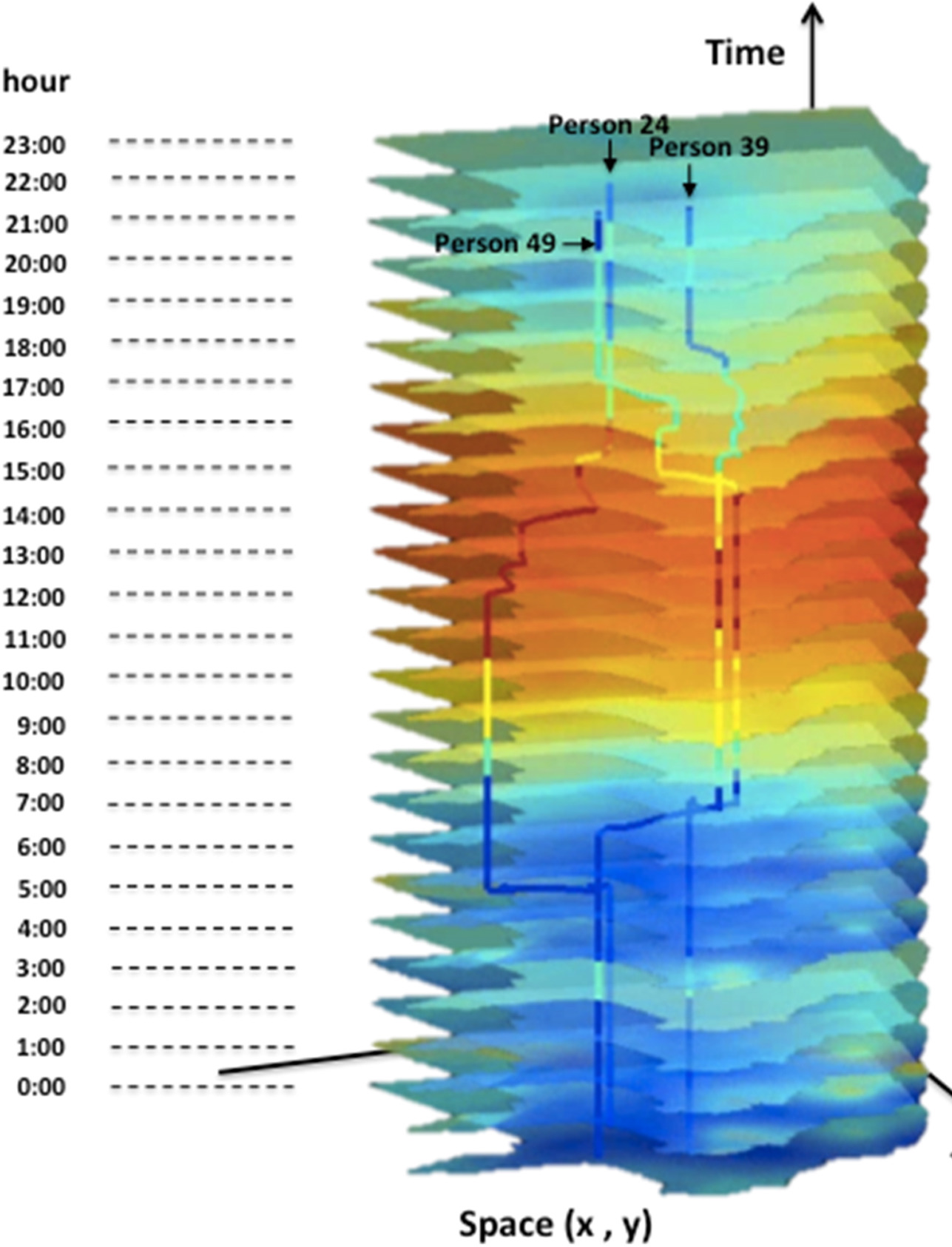
Disease Burden of Pollution
Collaborating with the Newcastle Urban Observatory who are sensing the urban environment
Aim: use T&T data to model urban flows and identify the most serious pollution hotspots.

Data Caveats
T&T data are
High resolution (spatio-temporal)
Abundant
BUT:
How representative of the wider population?
Abundant enough?
Three pillars for modelling & forecasting in urban areas
Big Data - high-resolution information about urban dynamics
Smart Cities - responsive urban infrastructure & policy making
ABM - bring them together?
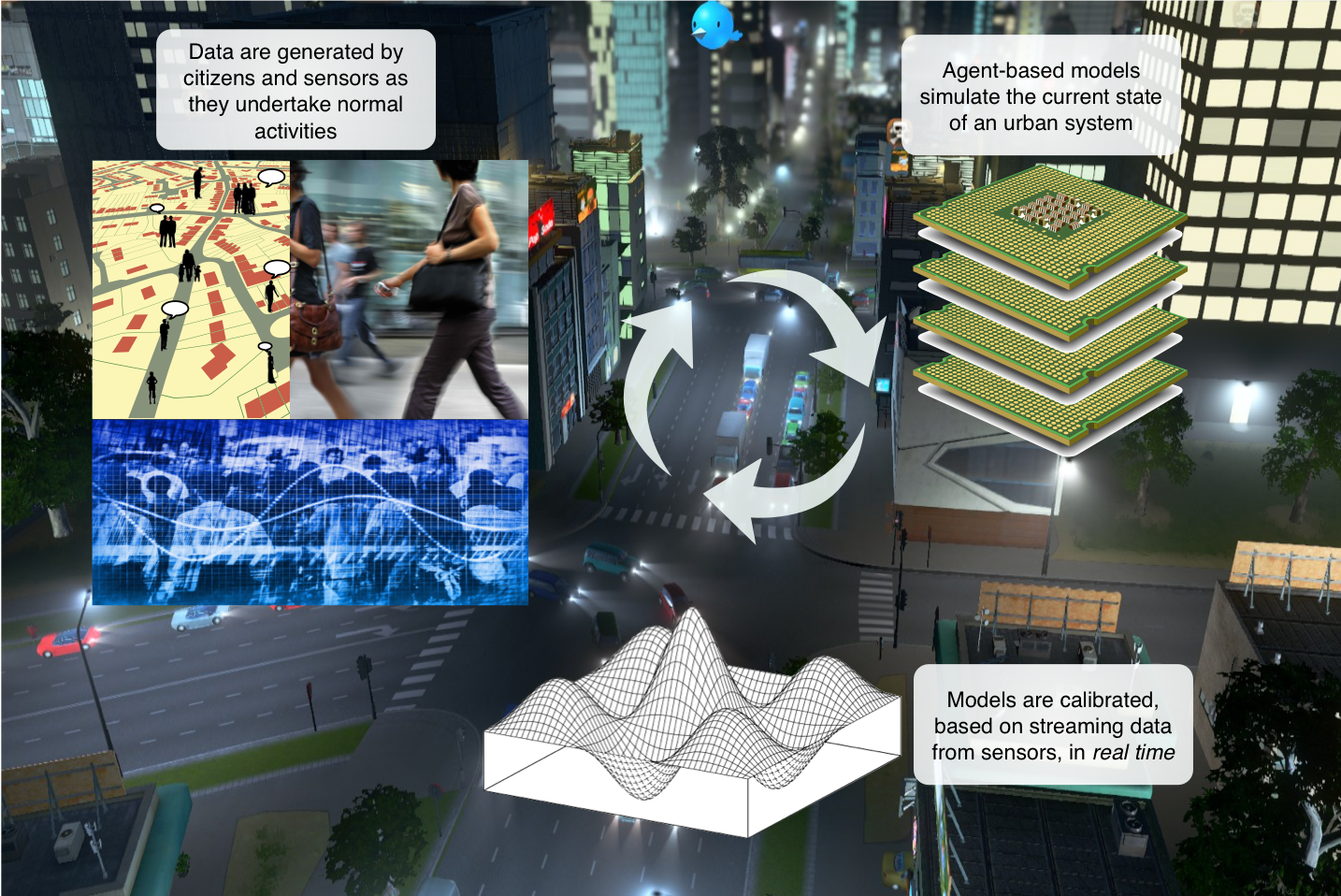
ABM Problems
1. Computationally Expensive
Not amenable to machine-led calibration
2. Data hungry
Need fine-grained information about individual actions and behaviours
3. Divergent
Usually models represent complex systems
Projections / forecasts quickly diverge from reality
3. Divergence
Complex systems
One-shot calibration
Nonlinear models predict near future well, but diverge over time.
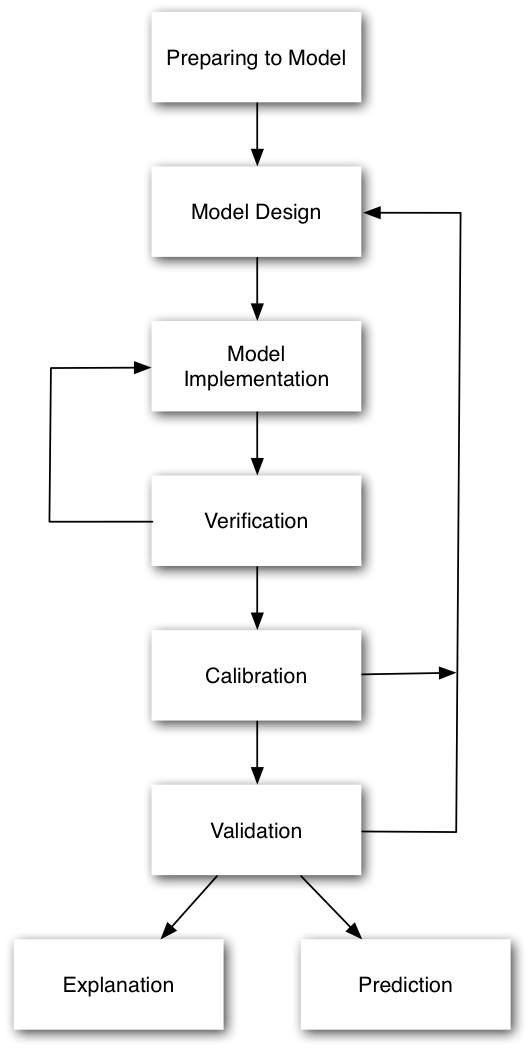
3. Divergence
Drawback with the 'typical' model development process
Waterfall-style approach is common
Calibrate until fitness is reasonable, then make predictions
But we can do better:
Better computers
More (streaming) data
Methodological gap
Dynamic Data Assimilation
Used in meteorology and hydrology to constrain models closer to reality.
Try to improve estimates of the true system state by combining:
Noisy, real-world observations
Model estimates of the system state
Should be more accurate than data / observations in isolation.
Ensemble Kalman Filter - Basic Process
1. Forecast.
Run an ensemble of models (ABMs) forward in time.
Calculate ensemble mean and variance
2. Analysis.
New 'real' data are available
Integrate these data with the model forecasts to create estimate of model parameter(s)
Impact of new observations depends on their accuracy
3. Repeat
Ensemble Kalman Filter - Basic Process
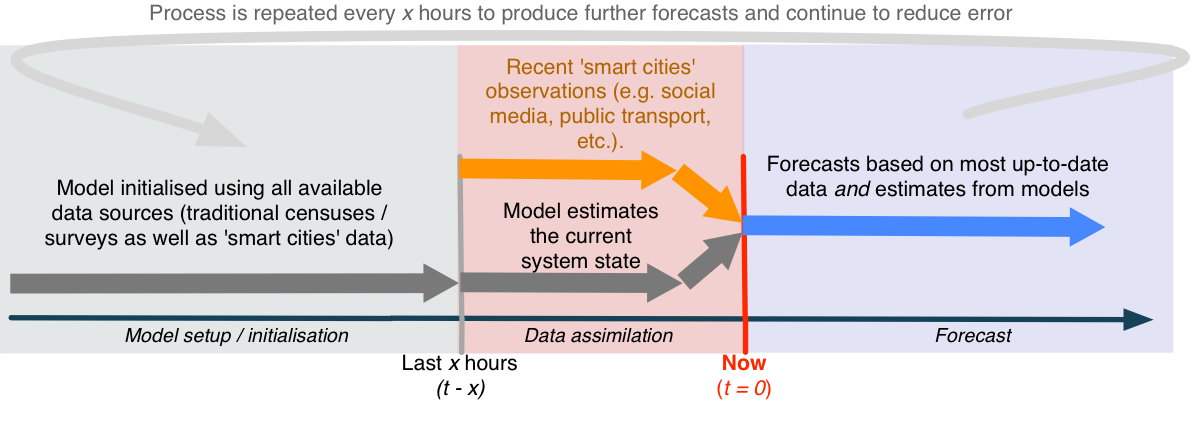
Experiment with an EnFK
Very simple ABM
People walking along a street
Every hour, x people begin at point A
CCTV Cameras at either end count footfall
Some people can leave before they reach the end (bleedout rate)
Aim: Estimate the number of people who will pass camera B

Hypothetical 'Truth' Data
Use the model to first generate a hypothetical reality
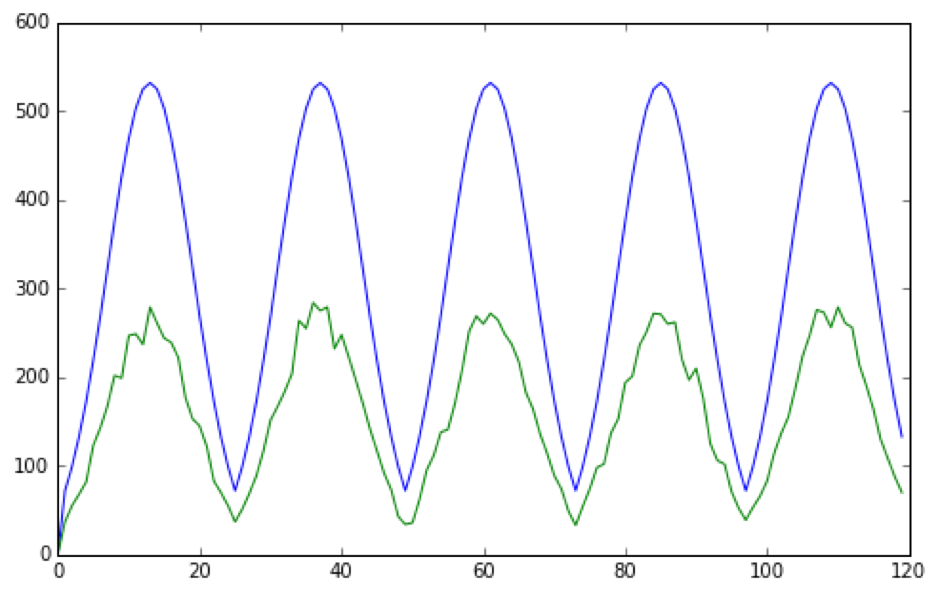
(Preliminary) Experimental Results
Forecast and analysis are barely distinguishable
Virtual observations are closer to 'truth' than the analysis :-(
This is probably due to the degree of randomness in the model
EnKF estimates the model parameter (bleedout rate) accurately :-)
Simulating Urban Flows (surf)
Aim: Create an agent-based model capable of representing the human flows in a real city.
Calibrated using streaming data dynamically
Hoping for European Research Council funding to continue the work
Conclusion
Some work from the Simulating Urban Flows project
Machine learning approaches
Tracking people (HABITS)
Dynamically calibdated ABMs
Towards a real-time city simulation ...
Simulating Urban Flows
Nick Malleson, Andy Evans, Jon Ward & Tomas Crols
Schools of Geography & Mathematics, University of Leeds
nickmalleson.co.uk
surf.leeds.ac.uk
These slides: http://surf.leeds.ac.uk/presentations.html
